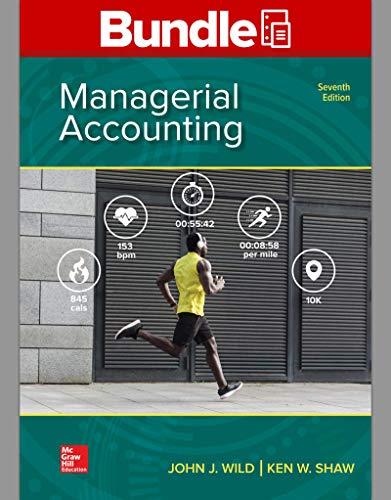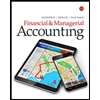
Concept explainers
Exercise 21-20 Computation of volume and controllable
Refer to the information from Exercise 21-19.Compute the (1) overhead volume variance and (2) overhead controllable variance and classify each as favorable or unfavorable.
Check (2) $14,375U
Exercise 21-19 Computation of total overhead rate and total overhead variance P3
World Company expects to operate at 80% of its productive capacity of 50,000 units per month. At this planned level, the company expects to use 25,000 standard hours of direct labor. Overhead is allocated to products using a predetermined standard rate of 0.625 direct labor hours per unit. At the 80% capacity level, the total budgeted cost includes $50,000 fixed overhead cost and $275,000 variable overhead cost. In the current month, the company incurred $305,000 actual overhead and 22,000 actual labor hours while producing 35,000 units.
- Compute the predetermined standard overhead rate for total overhead.
- Compute and interpret the total overhead variance.
Want to see the full answer?
Check out a sample textbook solution
Chapter 8 Solutions
Managerial Accounting + Connect Access Card
- Under absorption costing the ending inventory for the year would be valued at:arrow_forwardI am searching for the accurate solution to this financial accounting problem with the right approach.arrow_forwardPlease explain the solution to this financial accounting problem with accurate principles.arrow_forward
- Can you solve this general accounting problem using appropriate accounting principles?arrow_forwardPlease provide the correct answer to this financial accounting problem using valid calculations.arrow_forwardA company identifies two activities: material handling and machine setup. The cost drivers are number of parts (10,000) and number of setups (200), with cost pools of $250,000 and $180,000 respectively. Product A uses 2,500 parts and 50 setups. Calculate the activity-based overhead allocated to Product A.arrow_forward
 Cornerstones of Cost Management (Cornerstones Ser...AccountingISBN:9781305970663Author:Don R. Hansen, Maryanne M. MowenPublisher:Cengage Learning
Cornerstones of Cost Management (Cornerstones Ser...AccountingISBN:9781305970663Author:Don R. Hansen, Maryanne M. MowenPublisher:Cengage Learning Principles of Cost AccountingAccountingISBN:9781305087408Author:Edward J. Vanderbeck, Maria R. MitchellPublisher:Cengage Learning
Principles of Cost AccountingAccountingISBN:9781305087408Author:Edward J. Vanderbeck, Maria R. MitchellPublisher:Cengage Learning Financial & Managerial AccountingAccountingISBN:9781337119207Author:Carl Warren, James M. Reeve, Jonathan DuchacPublisher:Cengage Learning
Financial & Managerial AccountingAccountingISBN:9781337119207Author:Carl Warren, James M. Reeve, Jonathan DuchacPublisher:Cengage Learning AccountingAccountingISBN:9781337272094Author:WARREN, Carl S., Reeve, James M., Duchac, Jonathan E.Publisher:Cengage Learning,
AccountingAccountingISBN:9781337272094Author:WARREN, Carl S., Reeve, James M., Duchac, Jonathan E.Publisher:Cengage Learning,



